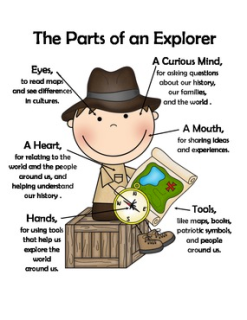Each year part of a social studies unit focuses on the idea of studying professions. Teachers expose students to professions that might be interesting, might be new professions or professions they hear about each year. In some classrooms this is the only exposure that students have to professions and they see the professions as a far reach goal. As teachers we need to make sure this is not the only exposure that children have to professions.
A couple years ago I participated in Sheltered Instruction Observation Protocol (SIOP) training. SIOP® is proven to:
– Increase student achievement
– Improve academic content skills and language skills
– Deliver results aligned to district objectives
– Prepare students to become college and career ready
There are 8 components:
- Lesson Preparation »
- Building Background »
- Comprehensible Input »
- Strategies »
- Interaction »
- Practice and Application »
- Lesson Delivery »
- Review and Assessment »
I left the training with one piece of information – I will change the way I spoke to my children. Ever since that day I have called my students “Readers” during Reader’s Workshop, “Writers” during Writer’s Workshop, “Mathematicians” or “Problem Solvers” during Math Workshop, “Scientists” during Science and “Learners” during Social Studies. I use this language with students when giving mini lessons, talking about the subject, and discussing our learning.
Peter H. Johnson discusses how students are “developing personal and social identities – uniqueness and affiliations that define the people they see themselves becoming”. At the beginning of the year, I share a selection of anchor charts for each subject. The anchor charts give students an introduction to the identities for each subject. We add to the identities as the year goes on as I want my students to know that there is not a specific identify for each subject.
Here are some examples of anchor charts:





After reading Chapter 3 and 4, I started thinking about my conversations with my students. I have one student that needs a lot of specific redirection. I have to think about my interactions with this student and how to ensure we have a smooth successful day.
The identity comments that Johnston provides in Chapter 3 made me think about my comments and how to encourage students to take ownership of their growth. I really enjoyed reading the positive comments and thought about ways to incorporate the language into my classroom. When reading the reflective comments, I immediately thought about my one student and the reaction I would get and how I could reframe the question to make it a more positive experience.
The agency comments that were provided in Chapter 4 give students more ownership of their learning. I enjoyed how the comments give students an opportunity to focus on what they did well and what they want to improve. This lets the student feel the accomplishments but then make a new goal. Students have to be taught how to be reflective and the comments in Chapter 4 increase the opportunities for students to reflect on both their learning and their actions.
I am looking forward to using these strategies in the classroom and then to reflect on my instruction with my students.
Reference:
Johnston, P. H. (2004). Choice words: How our language affects children’s learning. Portland, Me.: Stenhouse.
Cara, thank you for sharing the anchor charts! I need to remember these next year as I set up and establish my workshops next year. I agree 100% with what you said about letting the student lead the conversation and allowing them to applaud their own accomplishments and explain their own problems. I am looking forward to seeing how these strategies change my conferences with students!
LikeLike
Cara, I love how you related this specifically to a professional development opportunity you had and the anchor charts you use in the classroom! I agree with your comment on the need to teach students to be reflective of their learning, actions, and accomplishments. I look forward to seeing how using this language will lead to greater agency in my students and a more positive view of self!
LikeLike
Cara, these anchor charts are great! What a helpful visual for your students to have as they put on different “hats” throughout the day at school. I was wondering if you find it more difficult for your ELL students to “get” the symbolism? I’ve thought of my ELL students a lot when Johnston discusses different examples in which the student is being asked to explain how they feel, etc.
LikeLike
Cara,
Thank you for sharing the wonderful anchor charts to help show your students what it means to be a “reader”, “writer”, “scientist”, etc. I’m glad this connected with you from the SIOP Model Training. I really appreciate your sharing each video component of the model. I went to a training last summer too although find it very helpful to be reminded of each part in my planning and teaching experiences. Lastly, I certainly can agree with you thinking about how to reframe your language when speaking with a student who may have difficulties each day. I found so helpful the question examples and comment starters that Johnson gave us as examples to help keep this language positive with breaking sometimes tough interactions.
LikeLike